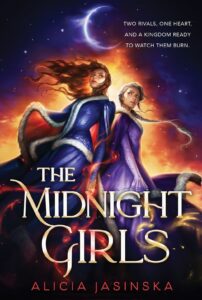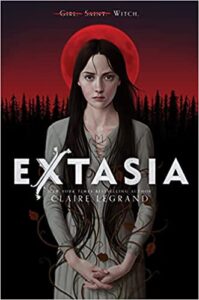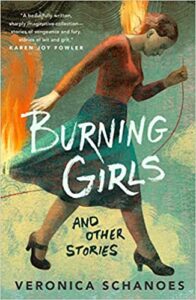The Midnight Girls by Alicia Jasinska
Sourcebooks Fire, 2022
ISBN-13: 978-1728209753
Available: Hardcover, paperback, audiobook, Kindle edition.
Buy: Bookshop.org | Amazon.com
The Midnight Girls takes place in a fantasy kingdom based on the Kingdom of Poland at the end of the 18th century, which was torn apart by wars with Russia, Lithuania, and Poland.
Three sister witches terrorize the forest, each with a servant girl who desperately wants to please them. Black Jaga’s servant is Zosia, with the power of Midnight. Red Jaga’s servant is Marynka, with the power of Midday. White Jaga’s servant is Beata, with the power of Morning. The girls compete to seize the hearts of princes for their witches. Zosia, hidden away, is most successful. Marynka is desperately in competition with her as she is punished when she fails and receives affection when she succeeds. Beata quietly claims the spoils while Marynka is distracted. The descriptions of the servant girls’ powers and especially of their literally ripping hearts out of people”s bodies were really hard for me to read.
All three girls are sent to the city during Karnaval season to claim the pure heart of Prince Josef, a source of powerful magic when eaten. In their competition, Marynka and Zosia inadvertantly keep saving the prince in order to gain the opportunity to claim his heart. It would be funny but it is deadly serious. In spite of their antipathy, they develop a close connection. Zosia plans to run away after taking this last heart and asks Marynka to come with her.
Prince Josef wants his kingdom to rebel and fight the tsarina of Rusja in order to preserve Lechija’s national identity and freedom from its oppressors, while the king is tired of fighting and willing to make concessions. His life is complicated by the return to court of Kajetan, his closest friend, who supported his family and turned against him on the battlefield. Both Zosia and Marynka and Josef and Kajetan harbor strong and contradictory feelings for one another. Josef and Kajetan’s story had unexplored potential. Marynka and Zosia feel more like they are characters from a folktale, and as one would expect in a folktale, are relatively one-dimensional. Their rivalry and romance are the primary focus of the story, so the political situation Josef and Kajetan were navigating, while intriguing, didn’t get much attention. The Midnight Girls has a similar feel in places to Katherine Arden’s.The Bear and the Nightingale, but that book balances these elements better.
This was a clever premise with great world building, and it wasn’t an easy book to read. Regardless of their home environment or your investment in the story, these girls really are monsters. They don’t try to justify their actions. It is really something that Jasinska has humanized them.
Reviewed by Kirsten Kowalewski







Follow Us!